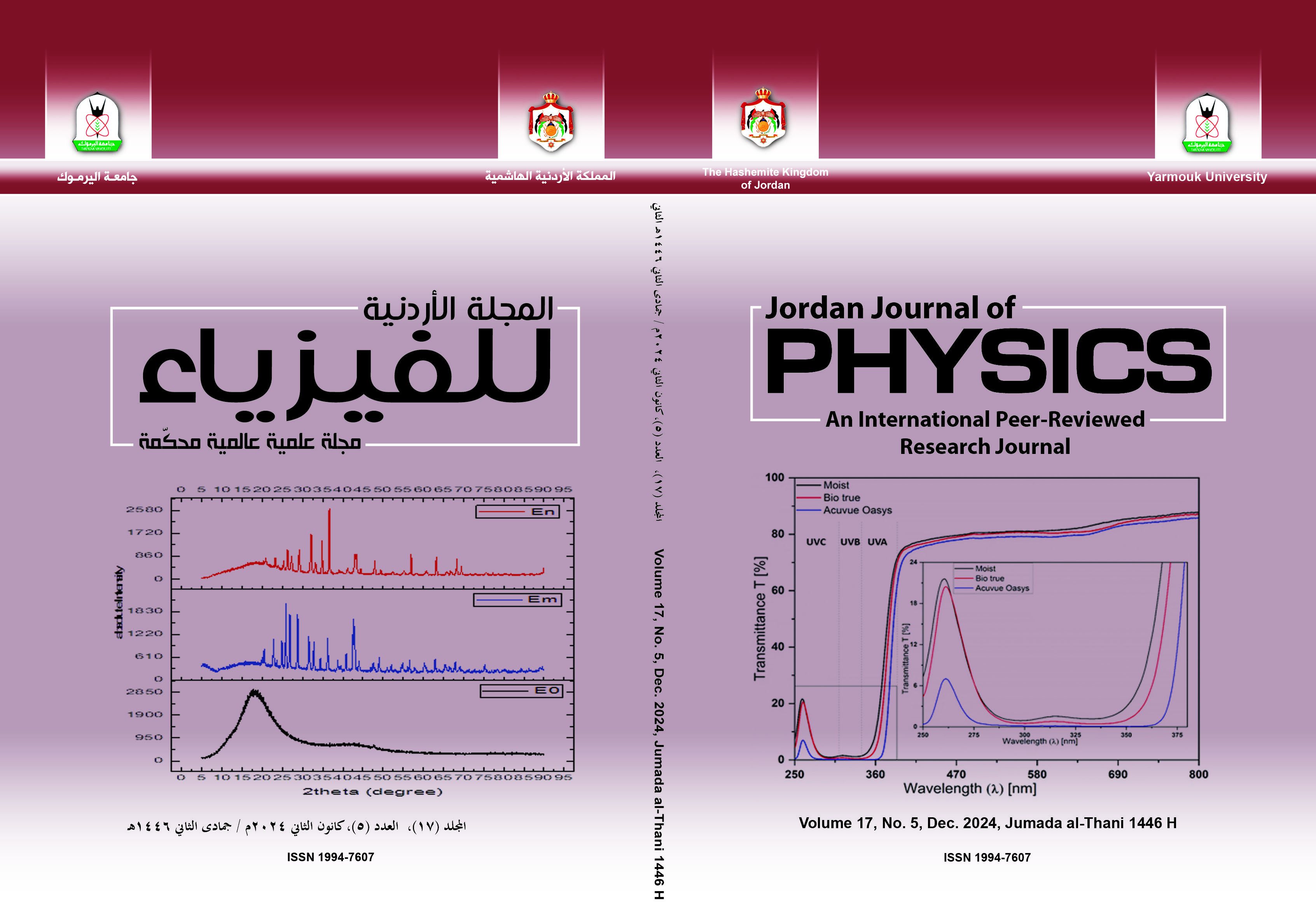Radon Concentration and Lung Cancer Risk in Bashika District
Abstract
In this work, the indoor radon concentration level and lung cancer risks have been measured in Bashika district, east of Mosul city-Iraq, during the summer season, by using time integrated passive radon dosimeters containing CR-39 plastic track detectors. These measurements were carried out in the sitting room of ten dwellings built by plaster for an exposure time of 60 days. The radon concentration in these dwellings ranges from (18.32-54.87) Bq.m-3with an average of (33.44 Bq.m-3 ), which lies below the acceptable
radon levels (50-150) Bq.m-3 recommended by the International Commission of Radiation Protection (ICRP). The average value of the PAEC was 3.61×10-3 in working level (WL) and the average value of potential alpha energy concentration (PAEC) in working level
month per year (WLM/Y) was 0.14. The average absorption effective dose equivalent for a person living in homes for which the investigation was done was found to be (0.79mSv.y-1 ). In the recent report (ICRP), the recommended action levels of radon in dwellings should be within the range of (3-10 mSv). It is observed that the average lung cancer cases per year per 106 persons were found to be 14.31.
Keywords: CR-39; Radon-222 concentration; AEDE; PAEC.


